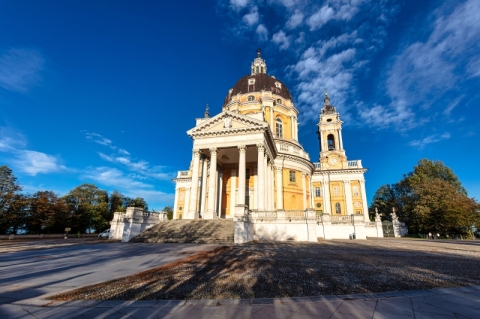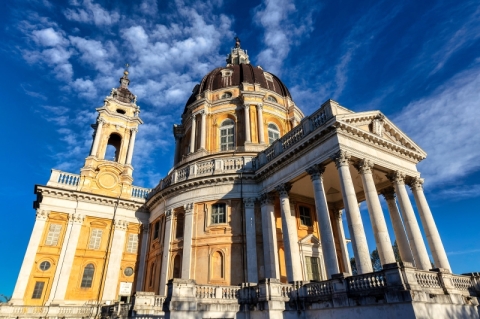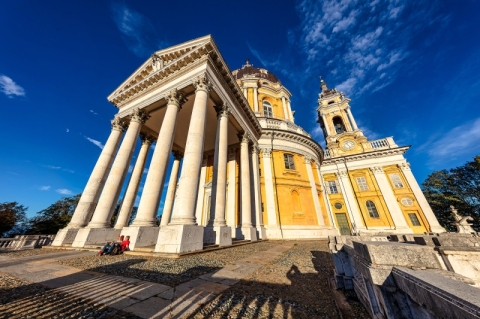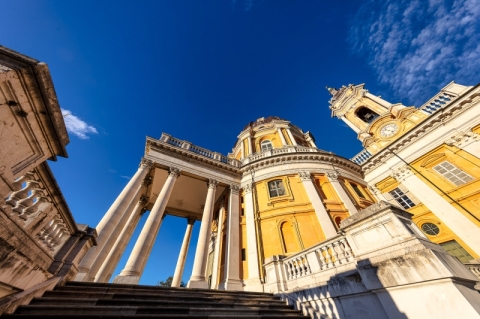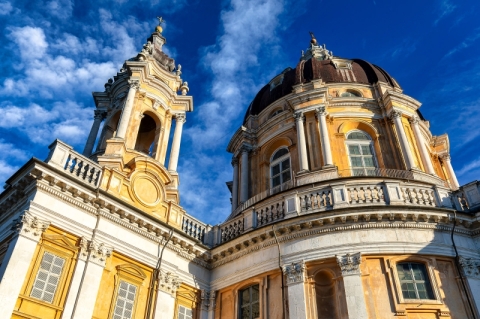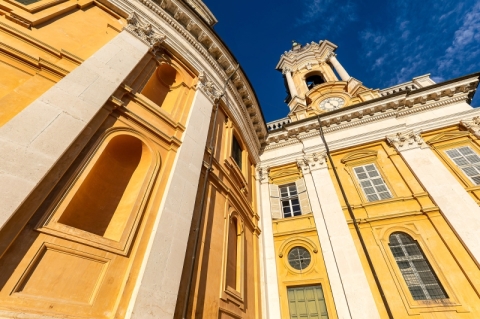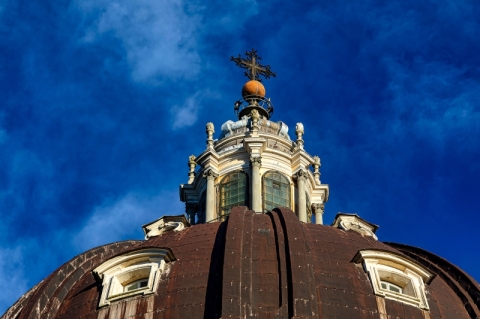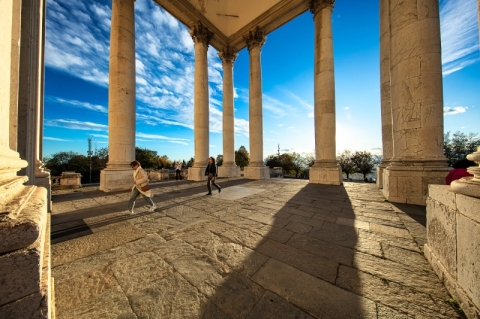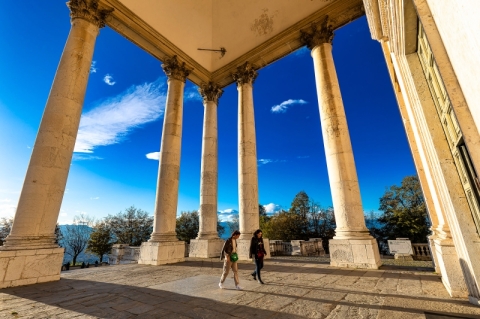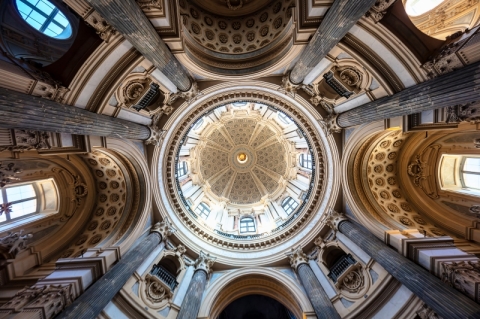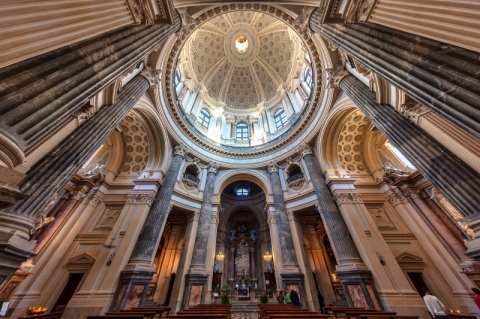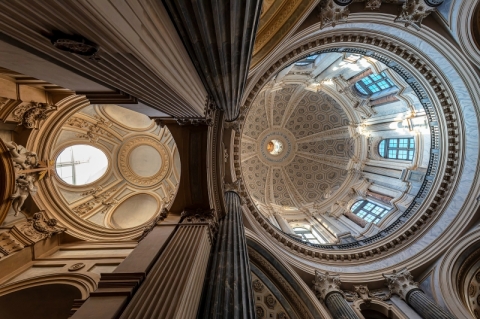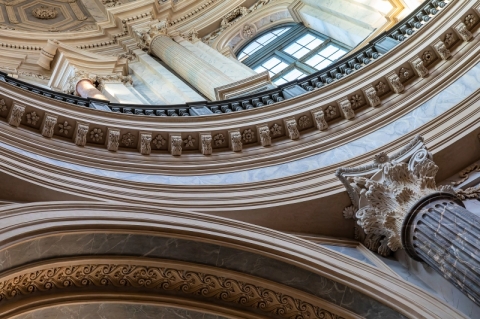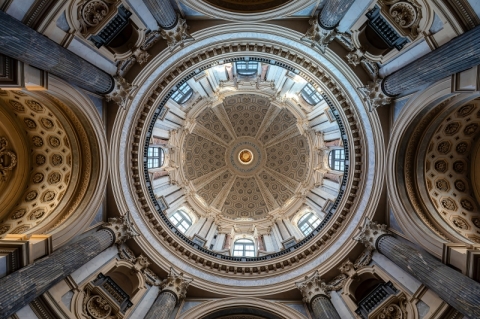Kultur
Superga Basilica Turin Piedmont Italy
Basilica of Superga

Superga Basilica Turin Piedmont Italy (Quelle: Roberto Magni Daniela Comi By Foto ReD Photographi)
As early as 1461, before the Basilica was built, there was a small church, a parish for the local faithful. At that time, the hill was "a sharp mountain, and at the top there was a church with three altars located in the same place where the Regia Congregazione di Superga church now stands, but at a higher location", dedicated to the Madonna but also to St. Anthony and St. Grato. It was built by King Vittorio Amedeo II as a thanksgiving to the Virgin Mary after defeating the French. For this reason, it is considered a "commemorative monument". The name Superga is thought to have Lombard origins and to come from a woman named "Saroperga", the owner of the woods on the site. Another assumption is a name of Germanic origin: Serrapergia; however, these are just hypotheses as they are not supported by certain historical sources.
The project was designed by the Sicilian architect, abbot Filippo Juvarra, and dates back to 1715. The chapel, located at the top of the hill, can be reached by road or by using the Sassi-Superga tram. The history of the basilica dates back to September 2, 1706, when the Duke of Savoy, Vittorio Amedeo II, and the Prince of Carignano, Eugenio di Savoia, climbed the hill to observe Turin besieged by the Franco-Spanish forces. Vittorio Amedeo, kneeling in front of an old pillar, swore that if victorious, he would build a monument to the Madonna. Filippo Juvarra not only designed the Basilica but also provided very detailed instructions on the materials to be used and the interior decorations.
The bricks had to have precise dimensions and were fired on the hill. The iron to be used was from Augusta di Ceres and the architect gave very detailed instructions regarding the marbles to be used: green from Susa, black from Como, yellow from Verona, white from Brosasco and Carrara, persichino from Saravezza.
The construction of the future basilica began on July 20, 1717, and lasted for fourteen years. The role of contractor was entrusted to the stucco artist Pietro Filippo Somazzi, who, in addition to some of the stucco decorations, also worked on some masonry works. Throughout the construction period, the summit of the hill (672 meters, the second highest in Turin) could only be reached by a poor stony path, and all building materials were transported on donkeys. On November 1, 1731, in the presence of King Carlo Emanuele III of Savoy, the temple was inaugurated with a solemn ceremony.
The Basilica offers a panorama defined by Jean Jacques Rousseau as "I have before me the most beautiful sight that can strike the human eye." Edmondo De Amicis wrote, "The panorama from the Superga hill is bigger and more beautiful than its fame." While maintaining its religious vocation, it is an unmissable tourist destination: thousands of visitors choose it each year for various reasons: pilgrims, art and history enthusiasts, as well as those who appreciate its natural and scenic beauty. The Basilica and the surrounding wonderful hills have so much to offer that it is impossible to be disappointed!
weitere Informationen: https://www.redmagazine.red
Für den Artikel ist der Verfasser verantwortlich, dem auch das Urheberrecht obliegt. Redaktionelle Inhalte von GDN können auf anderen Webseiten zitiert werden, wenn das Zitat maximal 5% des Gesamt-Textes ausmacht, als solches gekennzeichnet ist und die Quelle benannt (verlinkt) wird.

